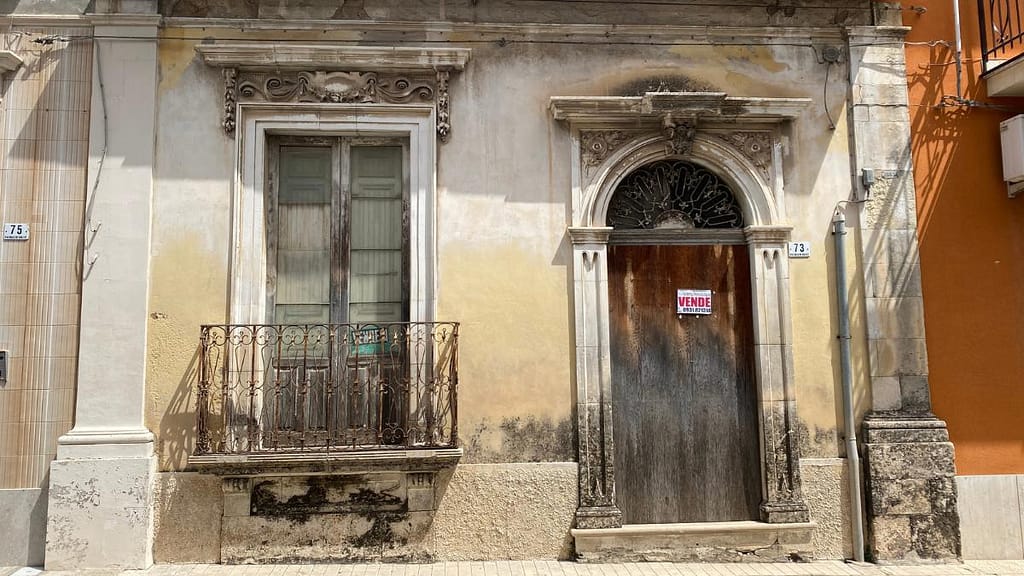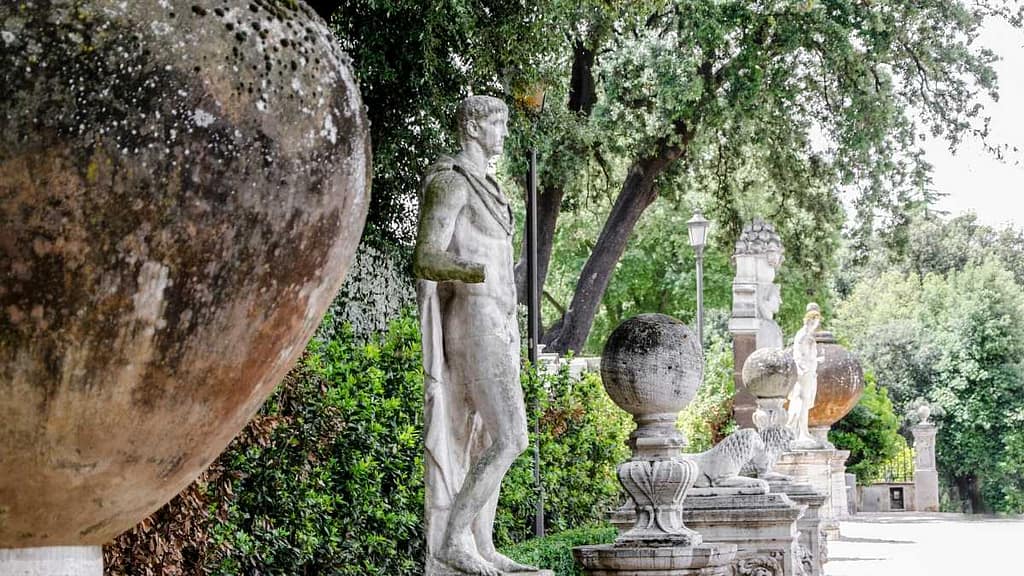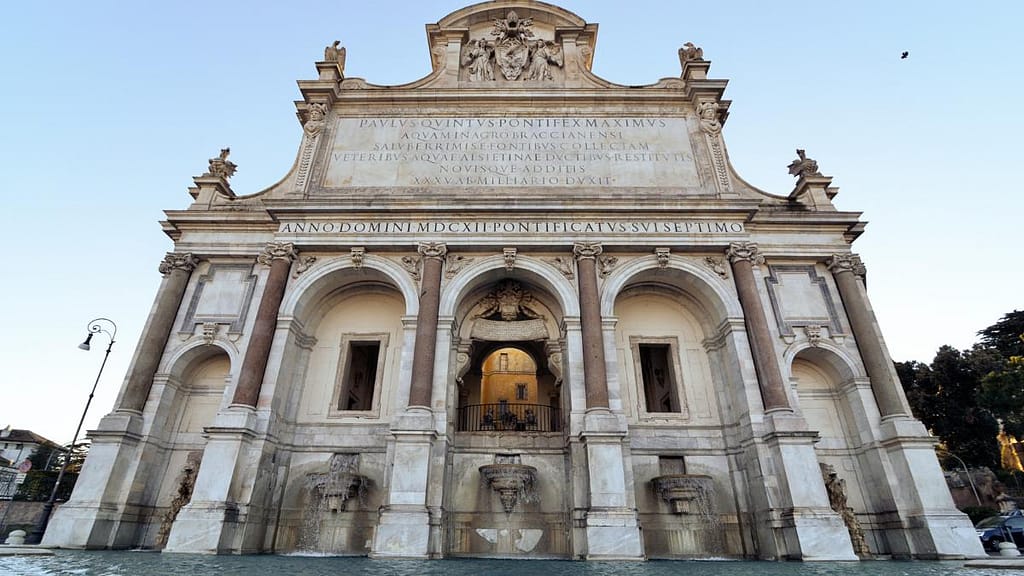Italy’s 1 Euro Home scheme has been making headlines for years now. This intriguing concept offers the opportunity to buy a house in Italy for just 1 Euro. As many people are drawn to Italy, it’s easy to see why the idea of buying cheap property here appeals to many.
But how does it work? Can you really buy a home in Italy for 1 Euro? And why isn’t everyone jumping at the opportunity to take advantage of this incredible offer?
This post may contain compensated links. Find out more info in our DISCLAIMER.
The answer is more complex than it might appear. There are many factors you must consider before buying a 1 Euro home beyond just the physical property. Having dealt with many issues related to home ownership in Italy, we have a lot of insight into what it takes to buy and renovate property here.
In this post, we look at what exactly Italy’s 1 Euro Home scheme entails. We also offer our take on the pros and cons of this intriguing initiative to help you decide if it’s the right decision for you.
What is the 1 Euro Home Scheme?
Italy’s 1 Euro Home scheme, also known as the “Casa a 1 Euro” program, was launched in 2008 by the Italian government to revive depopulated and aging towns and villages across the country. You can see all the properties across Italy that are part of the program.
In theory, the idea is simple. To revive historic villages suffering from depopulation and neglect, the government offers cheap properties to outsiders willing to relocate and breathe new life into them. The 1 Euro price is more symbolic than reflective of the market value of said properties. To ensure that the buyers convert the properties, the municipalities have stipulations, including a timeframe, when the property has to be renovated.
These homes can be found in various regions of Italy, such as Sicily, Sardinia, Tuscany and Abruzzo, among others. The initiative has gained popularity over the years, with more towns joining the scheme to offer their own 1 Euro homes.

The Allure of the 1 Euro Home Scheme
If you’re dreaming of Italy or have watched a movie set in the charming Italian countryside (I’m looking at you Under the Tuscan Sun), buying a fixer-upper in a historic town might seem like a great idea. After all, what can be more idyllic than that?
Historic towns surrounded by picturesque landscapes and loads of history can definitely offer a certain lifestyle. By living in one, you can immerse yourself in the local way of life, enjoy a laid-back lifestyle and eat all that fantastic Italian food. Plus, you can own your slice of Italian paradise and live out your best life. With a low price tag of just 1 Euro, it also looks like a good investment.

Buying a 1 Euro Home in Italy: Pros and Cons for Prospective Buyers
Like any major decision, you must consider both the advantages and disadvantages before embarking on this unique homeownership adventure. Let’s examine the pros and cons of buying a 1 Euro home in Italy.
Pros of buying a 1Euro home in Italy
1. Affordable investment: The primary allure of the 1 Euro home scheme is the low purchase price. With this initiative, you can acquire a property in Italy at an exceptionally affordable cost, potentially saving significant amounts compared to traditional real estate transactions.
2. Preservation of cultural heritage: Many homes are located in picturesque Italian villages, often with a rich history and cultural heritage. By participating in the 1 Euro home program, you can restore and revitalize these properties, preserving Italy’s architectural legacy and local traditions.

3. Personalization and creative freedom: Purchasing a 1 Euro home often means acquiring a fixer-upper property needing renovation. This allows you to unleash your creativity and personalize the home according to your tastes, preferences and needs. From architectural modifications to interior design choices, the possibilities for creating a unique living space are boundless.
4. Return on investment: While the initial investment may be minimal, you might see the potential for long-term gain. By renovating and upgrading a 1 Euro home, you can significantly increase its value, potentially yielding a handsome return on investment if you decide to sell.
Cons of buying a 1Euro home in Italy
1. Renovation costs and effort: While the property might only cost 1 Euro, the expenses and effort required to renovate that home might be quite substantial. Many of these properties are in a state of disrepair and require extensive renovation work. You should carefully evaluate your budget, skills, and willingness to invest time and resources into transforming the property into a habitable condition.
2. Additional expenses and local regulations: Buying a 1 Euro home entails more than the initial price. You should account for additional costs such as legal fees, taxes, permits and utility connections. Understanding and complying with local building regulations and restrictions is crucial, which can vary from region to region in Italy.

3. Location and existing infrastructure: Some 1 Euro homes are situated in remote or economically struggling areas, which may lack essential infrastructure and amenities. You should carefully research the location of the home you’re considering and factor in things like accessibility, proximity to services, healthcare facilities, schools and employment opportunities.
4. Time and patience: Renovating a property takes time and patience. Delays, unforeseen challenges and additional expenses can be part of the process, especially if you’re not there to supervise the project. You should be prepared for potential setbacks and understand that transforming a 1 Euro house into a home may require perseverance and adaptability. You might also find it challenging to find workers to complete your project, especially in remote areas.
Our Personal Experience
We live in a small town in the Italian countryside surrounded by many other towns of various sizes. The home we live in is only a few decades old, making it very modern compared to most properties offered under the 1 Euro scheme. You’d think that would make upgrading or renovating reasonably easy. As we have learned, tradesmen in Italy don’t work the same way they do in Canada.
The first challenge is finding people to do the work. The smaller the town, the smaller the pool of professionals. The second is getting them to do the work. We had called about three different plumbers before one actually showed up and did the work we wanted. We had three electricians show up, but once they gave us a quote, we never heard from them again. The same goes for getting someone to do the roof or paint the fence.
If you’re considering buying a property in a town that’s been abandoned and is in disrepair, you might have difficulty finding workers to do the renovations. These towns tend to be isolated and deserted, hence why the authorities are selling them for cheap. If there are any available tradesmen in the area, they might already be working elsewhere or have limited capacity and availability. This can be a significant challenge considering that homes under the 1 Euro scheme have a completion timeline.

Another issue to consider is the availability of Internet, gas, electricity and water. Even if you manage to get your house restored, you need all those things to live in it, but if there are no other people (or a handful of them) living there, you might not be able to connect these services. It’s a known fact that in Italy, the further south you go, the less infrastructure and the quality of it declines. That’s not to say that the infrastructure isn’t there, but it’s a likely possibility if you’re looking at abandoned towns.
Living in a small town, especially a remote one, means there isn’t much to do. You’ll need a car to get groceries or go to bars or restaurants. Schools and medical care might also be quite a distance away, so that’s something to consider, especially if you have kids or medical issues.
Is Buying Property in Italy for 1 Euro Right for You?
Does this mean that we think buying property in Italy for 1 Euro is a bad idea? Definitely not. However, you must have realistic expectations and understand the process before signing on the dotted line. Thorough research and due diligence before buying will also go a long way in making the process as smooth as possible.

The research will also help you assess your financial situation, set a realistic budget and plan for contingencies. Getting an estimate for how much your renovation project will actually cost will help you determine whether the whole thing is worth the effort. Buying an existing property for a bit more might be your better option. There are many affordable properties in Italy, and they don’t have renovation timelines and are located in populated areas with existing amenities.
Finally, you also need to consider whether living in a small, close-knit community aligns with your desired lifestyle and long-term goals. Living in an isolated town when you don’t speak the local language can also feel lonely.
Practical tips for buyers
It’s worth mentioning that buying a property in Italy, be that for 1 Euro or more, doesn’t qualify you for Italian residency. This is a common misconception of people thinking they can buy a cheap home and be eligible to remain in the country as a result. If you’re looking for a way to live in Italy, we encourage you to consult an immigration professional to assess your qualification status.

If you simply want to buy a home in Italy and are looking for an affordable option, then the 1 Euro scheme can be the perfect solution. Here are some of the things to consider:
- Visit where you want to buy: This might seem obvious and should be. Go to the town where you can assess not only the conditions of the town and the properties but also get a feel for the area. Is this a place where you can see yourself living? Talk to anyone who bought a property there and get their opinion on the process and experience. Interact with the locals to gain a sense of the community you would be joining.
- Property evaluation: Prioritize visiting the property and conducting thorough inspections to assess its condition, potential renovation challenges, and the feasibility of your vision. Renovating a property in Italy doesn’t always carry the same effect as flipping properties in North America. Make sure you understand what you can expect in return for your investment.
- Understand the legal requirements and obligations: Familiarize yourself with the legal process of buying property in Italy, including hiring a notary, obtaining necessary permits, and paying taxes and fees. Hiring a local real estate agent can help you navigate these complexities. Find out any conditions or timelines you must adhere to after buying the property and what happens if you don’t meet them.
- Financial assistance: Some towns offer financial incentives, such as tax breaks or grants, to help with renovation costs. Be sure to research and apply for these programs if you’re eligible.
- Renovation process: Research local contractors, architects and craftsmen experienced in local construction techniques. Engaging professionals who understand the nuances of renovating historical properties is crucial. The municipality might also be able to assist you with this since they want you to renovate the property, not just let it sit there.
- Time commitment: Most towns require buyers to renovate their properties within a specific timeframe, usually two to three years. This means you’ll need to act quickly and be prepared to invest time and resources into the renovation project. You’ll need to decide whether you’ll be there the whole time to oversee the project or have to hire someone to do it for you.

Conclusion
Buying a home for 1 Euro is definitely an exciting prospect if you’re looking for an affordable investment and the chance to live in Italy. However, it is essential to weigh the pros and cons carefully. Conduct thorough research, assess your financial capabilities, and consider your personal commitment to renovation work before diving into this unique homeownership venture. With the proper preparation and realistic expectations, buying a 1 Euro home in Italy can be an unforgettable and rewarding experience.




